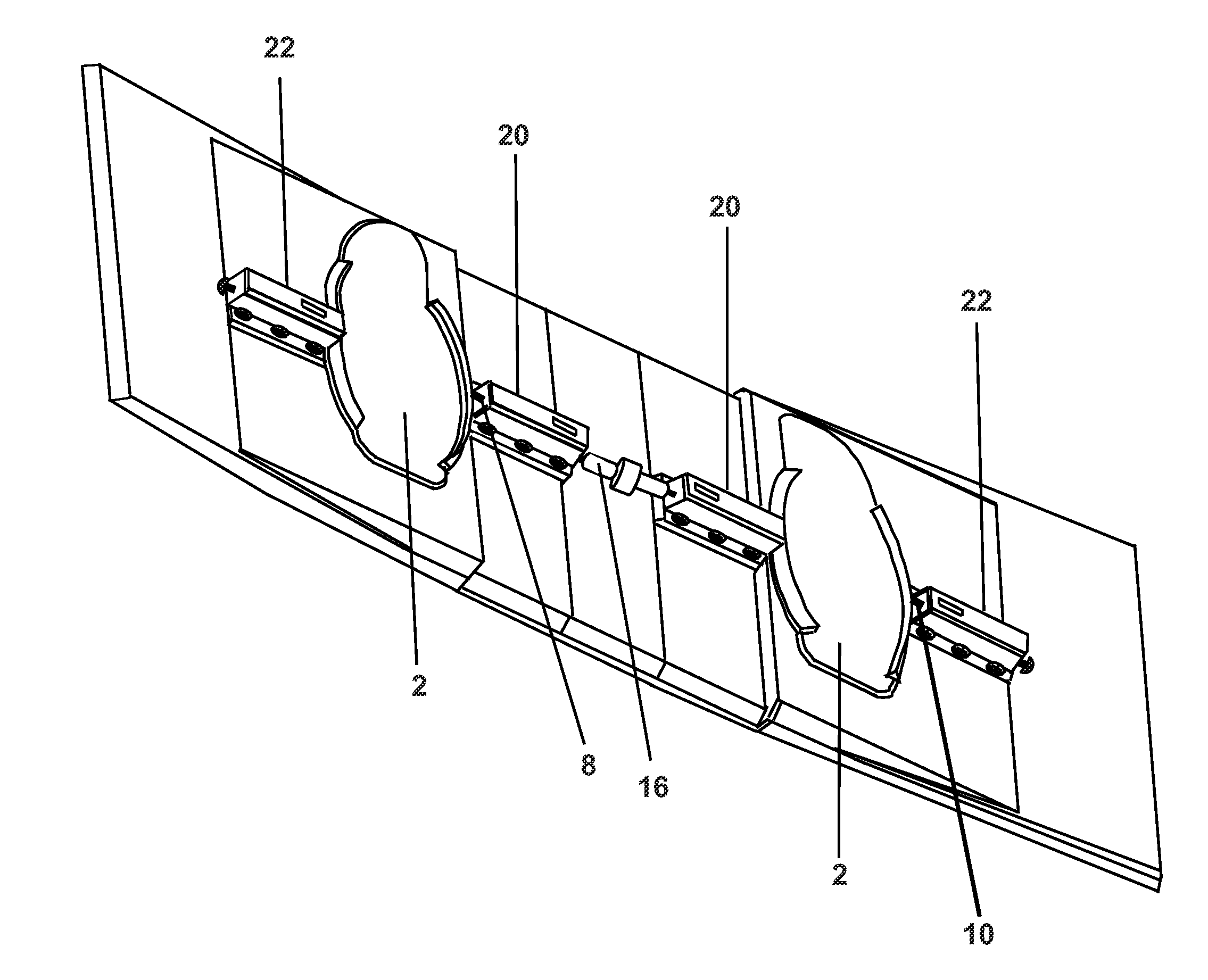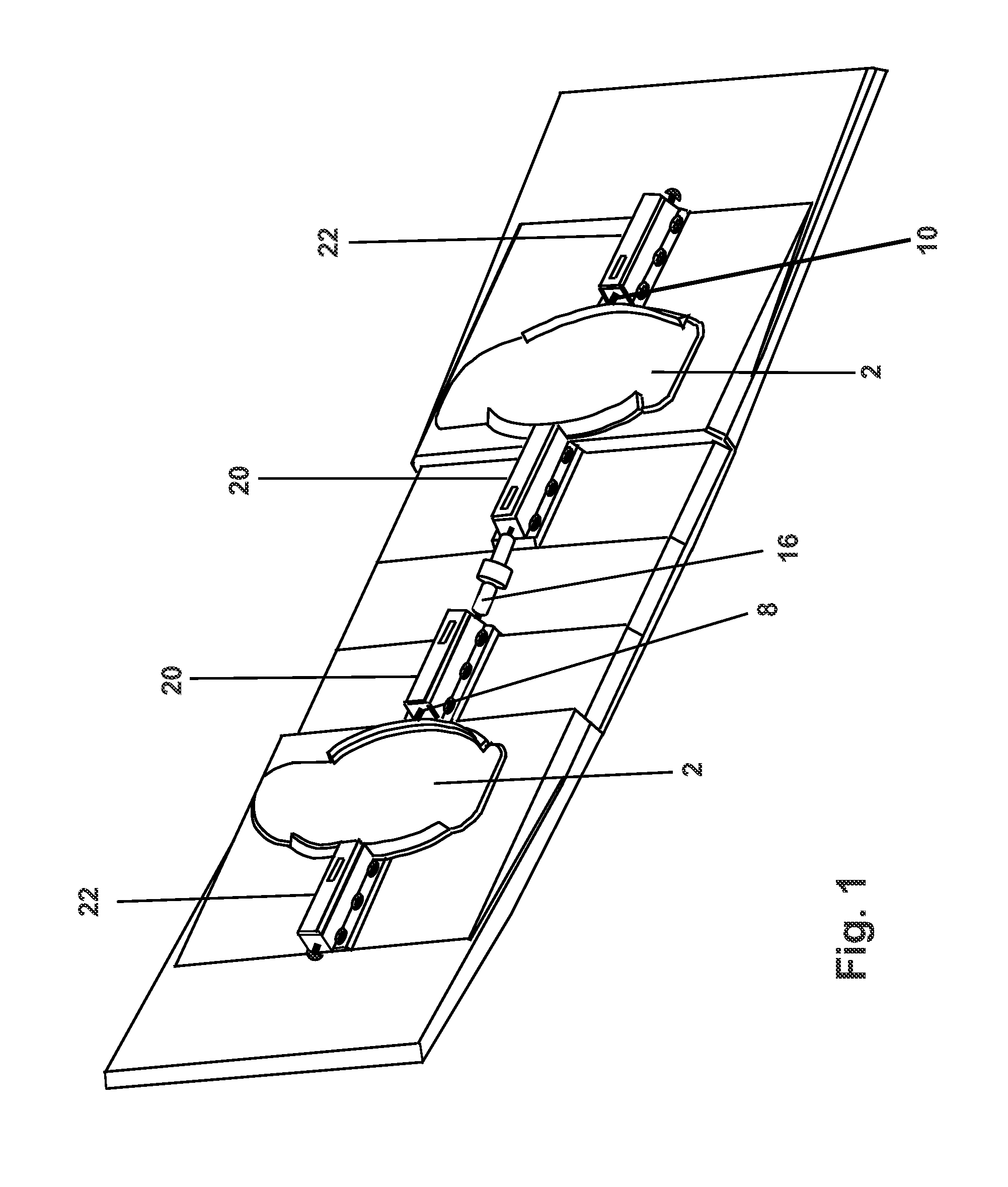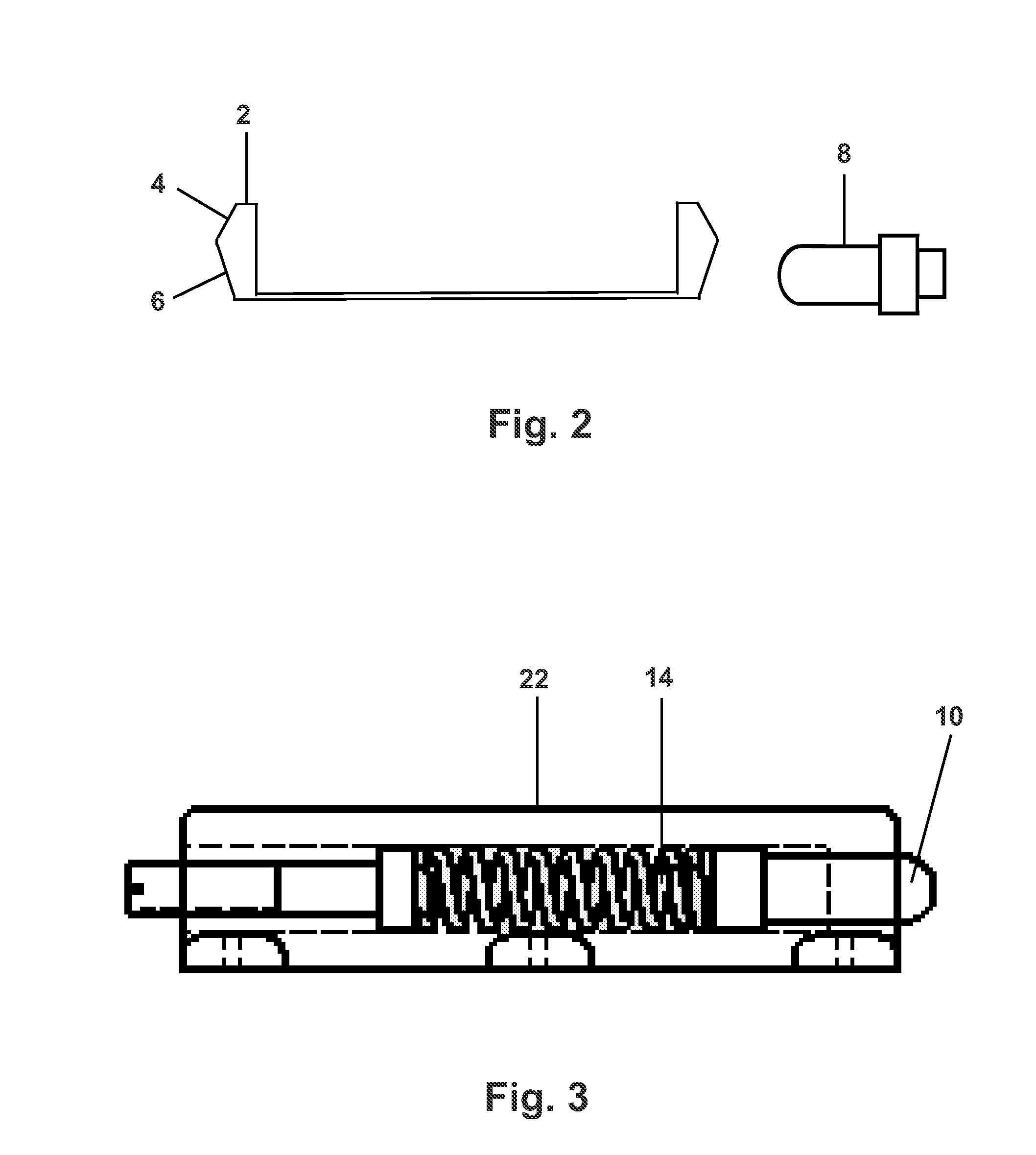Wakeboard Release Mechanism
a technology of release mechanism and wakeboard, which is applied in the field of wakeboard release mechanism, can solve the problems of long service life of the device aimed at reducing these injuries, inherently more dangerous than waterskiing, and long time-consuming, and achieve the effect of improving the safety of the wakeboard and reducing the risk of both knee and head injuries
- Summary
- Abstract
- Description
- Claims
- Application Information
AI Technical Summary
Benefits of technology
Problems solved by technology
Method used
Image
Examples
Embodiment Construction
[0035]Noyes et al. The Journal of Bone and Joint Surgery. “Biomechanical Analysis of Human Ligament Grafts Used in Knee-Ligament Repairs and Reconstructions.” 1984. reported measurements finding that the ACL strength of 18 subjects with a mean age of 26 was 388±60 pounds. Based on these measurements and assuming a normal distribution, a release mechanism that imparts no more than 268 pounds of tensile force to the knees would be below the ultimate ACL strength of 97% of a 26 year-old population. Thus we chose 268 pounds as the maximum force for design purposes.
[0036]The rider imparts a downward force upon the board through the boots, and the board pushes up on the rider with the same force. The allowed magnitude of this force is controlled by point at which the springs release the feet from the board. In a preferred embodiment, the boots are held in place by 4 release mechanisms that function similarly to spring plungers. The stiffness of the spring controls the release force. In a ...
PUM
 Login to View More
Login to View More Abstract
Description
Claims
Application Information
 Login to View More
Login to View More - R&D
- Intellectual Property
- Life Sciences
- Materials
- Tech Scout
- Unparalleled Data Quality
- Higher Quality Content
- 60% Fewer Hallucinations
Browse by: Latest US Patents, China's latest patents, Technical Efficacy Thesaurus, Application Domain, Technology Topic, Popular Technical Reports.
© 2025 PatSnap. All rights reserved.Legal|Privacy policy|Modern Slavery Act Transparency Statement|Sitemap|About US| Contact US: help@patsnap.com



